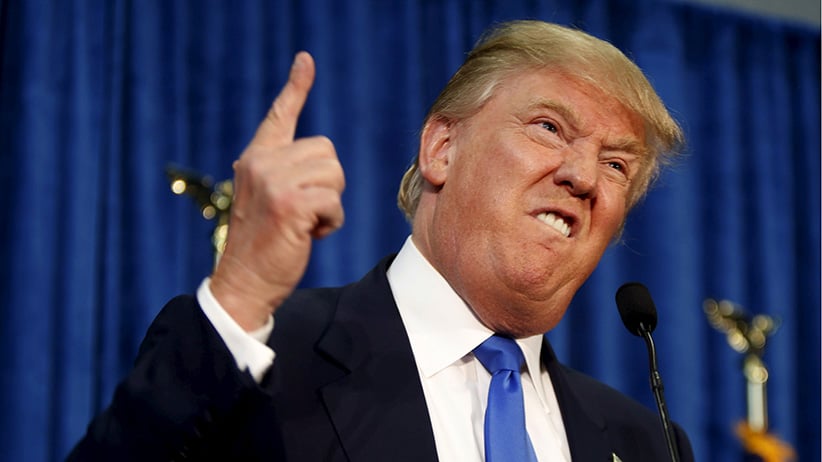What got lost during the 2016 U.S. election
For the first time in American history, it was a loser-take-all federal election
Share

For the first time in American history, it was a loser-take-all federal election. It’s not as if winning doesn’t matter. It does, more than ever, and with Donald Trump’s election win, America just proved once again it can be unpredictable, rebellious and independent. But this election was as much about what was lost, as who won.
First and foremost, the facts were lost. From the start of the campaign there was a war on facts and the primary aggressor was Donald Trump. This is not a mainstream media bias, part of what Trump has called the “rigged system.” It’s just math. Clinton told lies about her emails, and she dissembled on policy positions like trade, but those pale beside Trump. The Toronto Star’s Daniel Dale admirably chronicled Trump’s daily fusillade of falsehoods from September to Election Day and found 560 false claims, which, as Dale wrote, is a “neat 20 a day.” Let that sink in. 20. Falsehoods. Per. Day.
Maclean’s longreads: The rise of Donald Trump
The Republican nominee made an early calculation: rage trumps facts. The relentless barrage of untruths overwhelmed the sting of a singular lie and made Trump’s temper the story itself. It reminded me of the fire in Fort McMurray, Alta., which got so large it began to generate its own weather. “It was creating its own high winds and even lightning was coming from the smoke clouds it created,” one Alberta fire official noted back then. He might as well have been talking about any day on the Trump campaign.
Once facts went into the bonfire, it was a free-for-all. The prime mover of Trump’s crusade—excluding his mendacious amplification of the Obama birther conspiracy—was the despicable lie that Mexican immigrants are rapists and murders. As we all know, Trump’s rage soon hit Muslims, women and as the alt-right fellow travellers hopped on board, Jews. Again, for those who believe this is biased reporting, try to explain how the rocker Ted Nugent was on stage introducing Donald Trump on Nov. 7 in Michigan? While Nugent was born in the battleground state, anyone with access to Google saw his infamous Facebook post in February, where he showed 12 well-known Jews with an Israeli flag over their faces—including, as he wrote, “Jew York City Mayor Mikey Bloomberg,” and announced: “Know these punks. They hate freedom, they hate good over evil.” Classic white supremacist material. Trump made the fringe right of America mainstream, a legacy that will go on long after this week.
Related reading: What Donald Trump’s foreign policy would look like
There were other losses: The loss of respect for political differences, the loss of decency and empathy, the loss of proportionality and the rise of false equivalencies. Clinton’s “careless” use of a personal email server became more important than, say, Trump’s statement about how he would deal with the U.S. debt. “I would borrow, knowing that if the economy crashed, you could make a deal,” he told MSNBC in May. It was jaw-dropping. The U.S. is the global reserve currency. Countries buy U.S. Treasury bonds with the confidence they will get repaid at 100 cents on the dollar. The idea that a President might renegotiate some discount repayment is so outlandish it would upend the entire global economic system. Did that get the attention it deserved? No.
The real loss, however, was in how both candidates responded to the anger Americans expressed about a system that isn’t working for them. As one Michigan voter told me, “This is a choice between a crazy person and the same old crap.” The U.S. is no longer just divided by a vertical line down the left and right, but by a horizontal line, as Steve Schmidt, John McCain’s, former strategist, likes to say. That line divides the haves and have-nots, those on top who benefit from globalization and those on the bottom who are hurt by it. The genius of Trump—and he has a populist genius—was to tap into the anger of those below the horizontal line, to animate their frustration, the way Bernie Sanders did. To ignore this anger over job losses and lowered expectations is to miss the entire point of the election. Millions of people, looking at a bleak future, have slid from healthy skepticism to corrosive cynicism to, finally, conspiracy theories about rigged elections and corrupt institutions.
Related reading: Ten to watch in the White House
Clinton failed to authentically connect with this disaffection, and it was her biggest flaw. Her empathy came off as political opportunism. But will Trump blow the chance to make the anger productive, to use it as Americans have always used their restless quest for happiness, as a fuel to reinvent a great nation?
The American experiment has recovered from much bigger cleavages than this election: the Civil War, Vietnam, the civil rights movement, assassinations. It is a resilient, brilliant and diverse country. But for a country of winners, this historic election was all about the revenge of the losers.